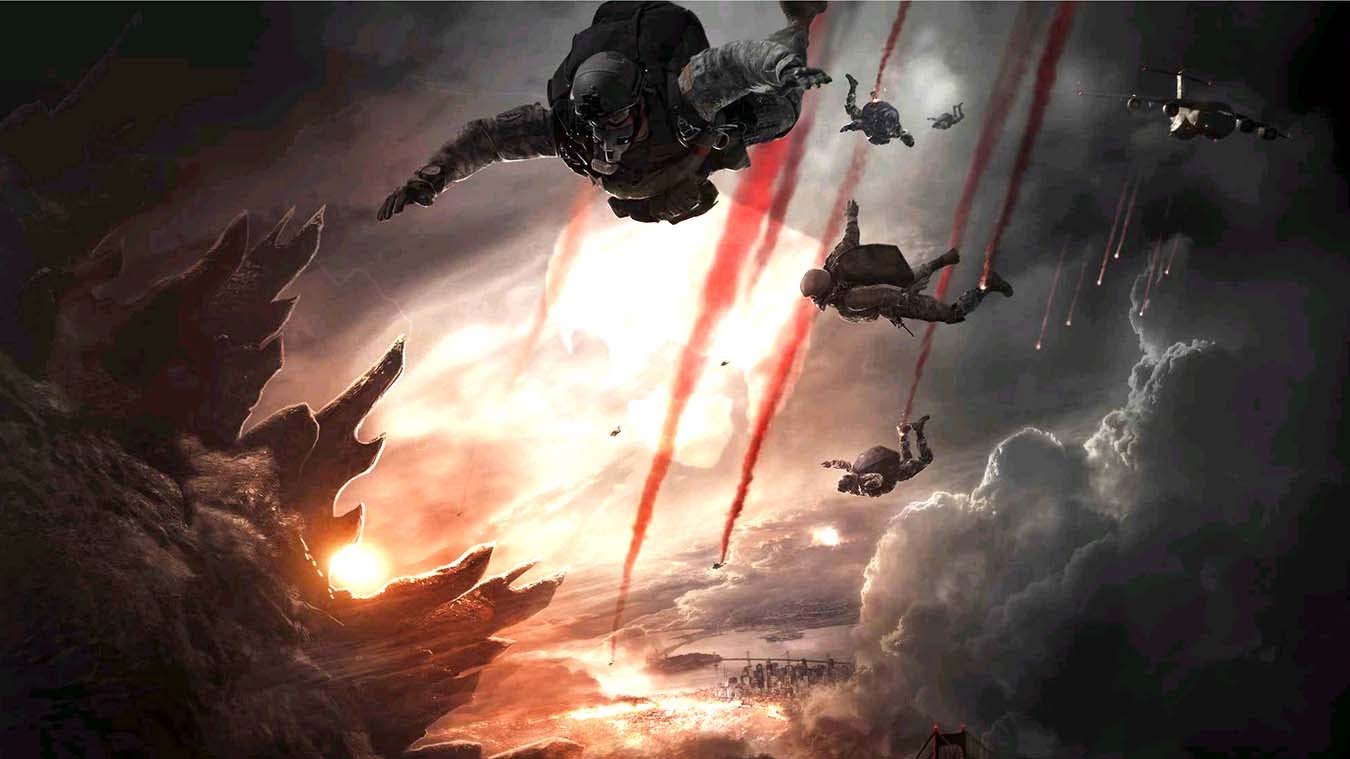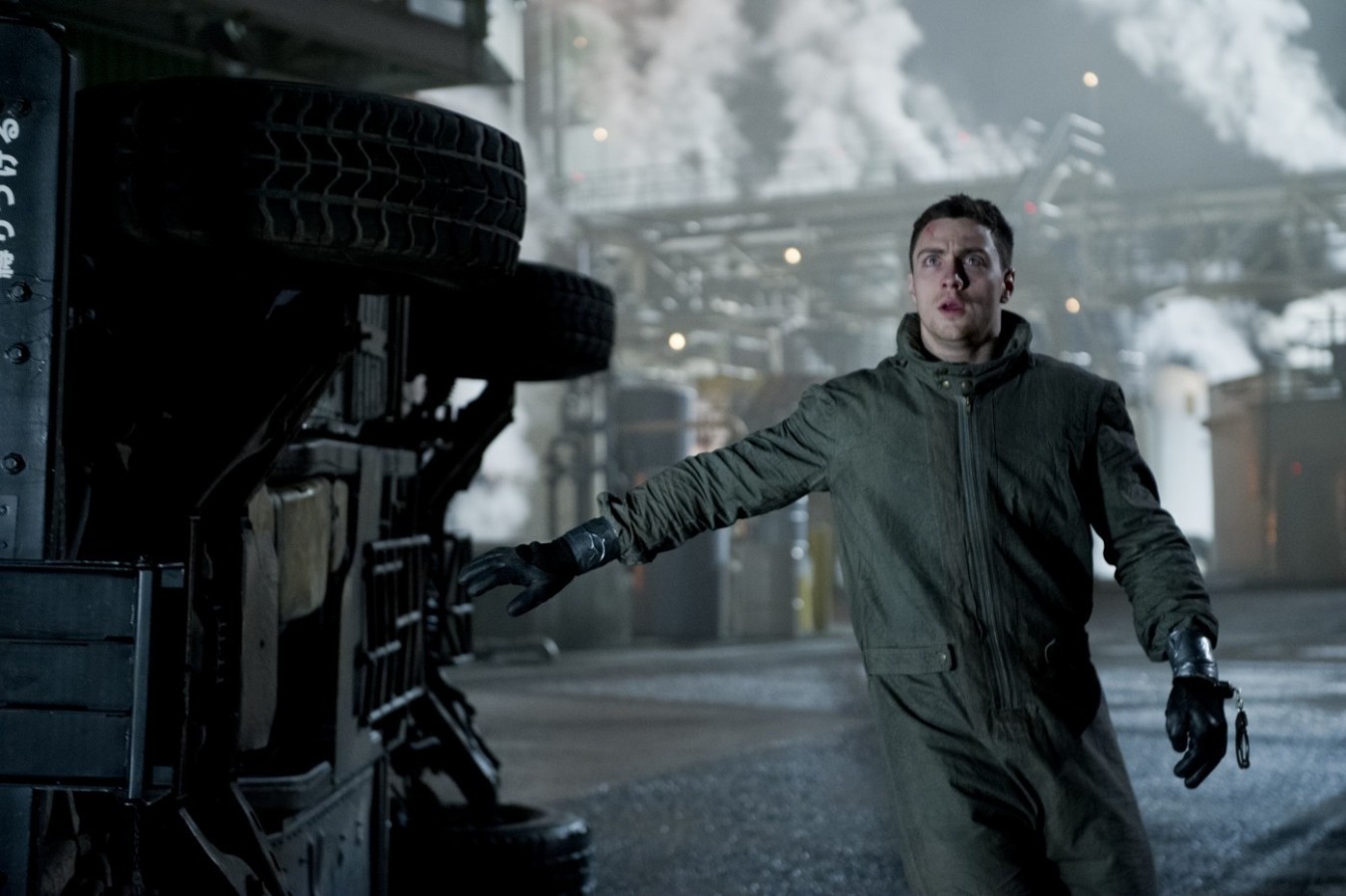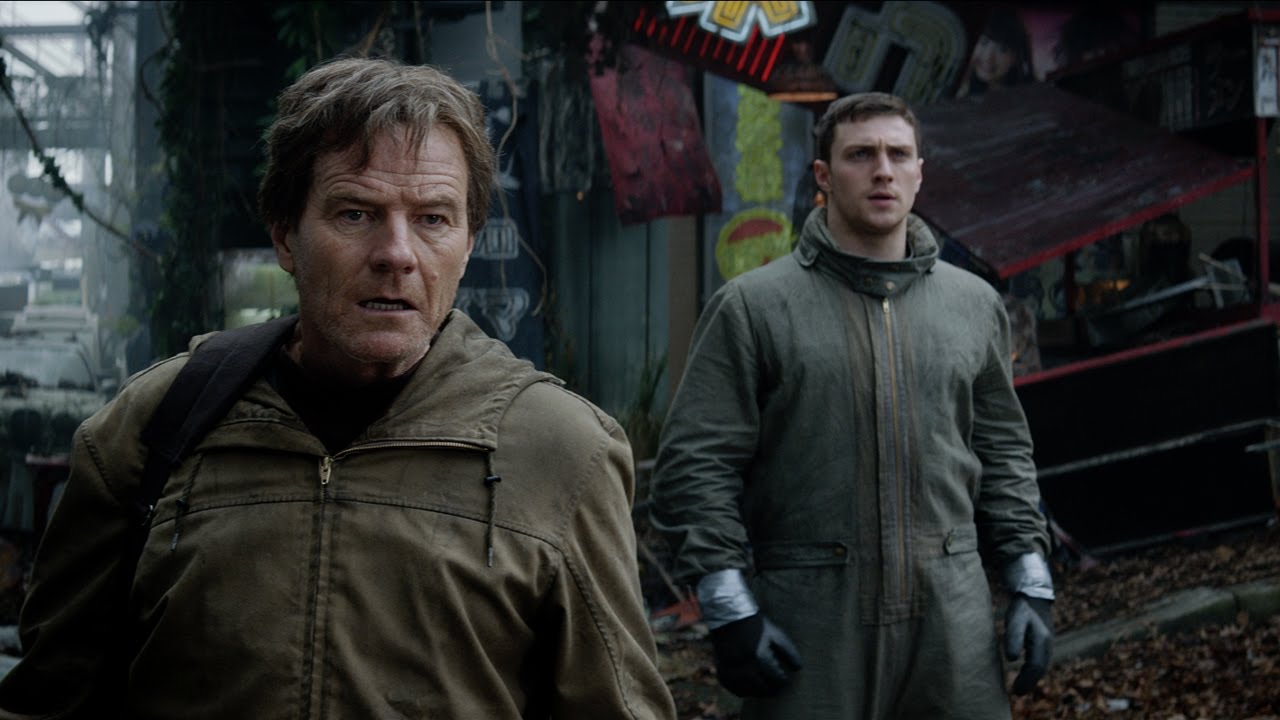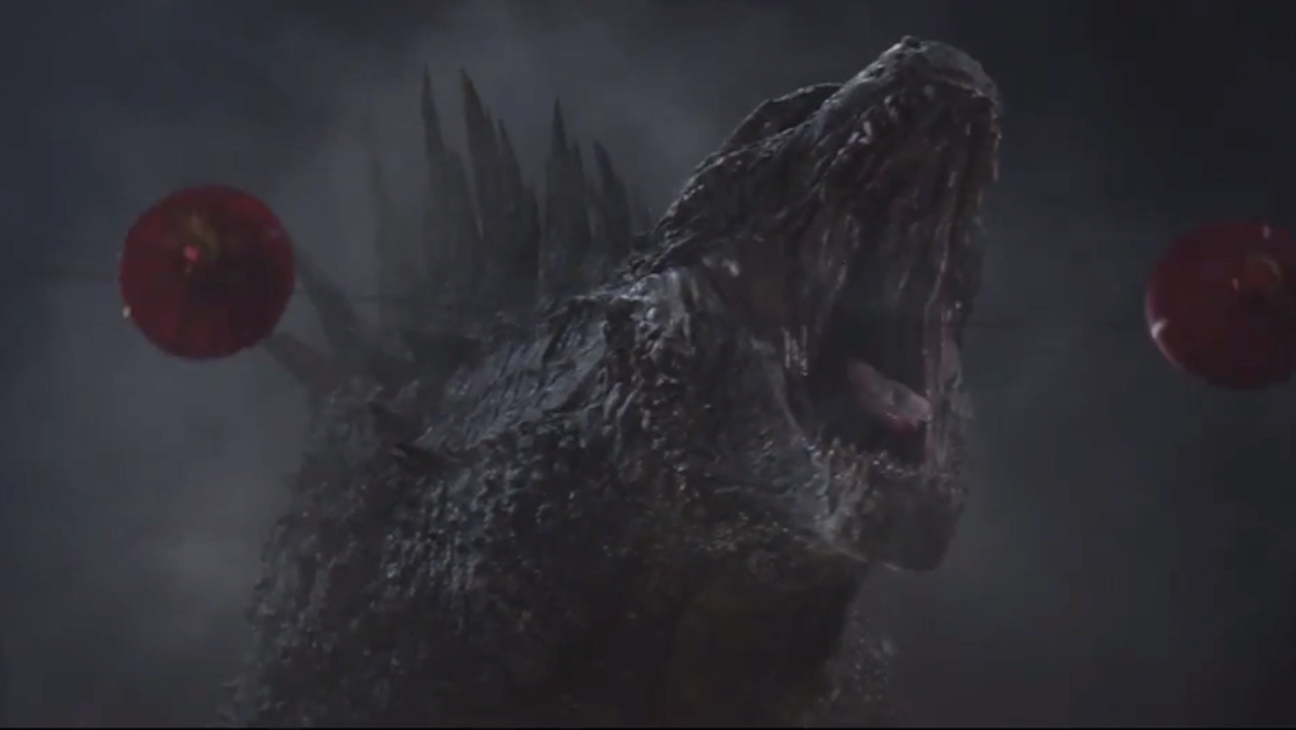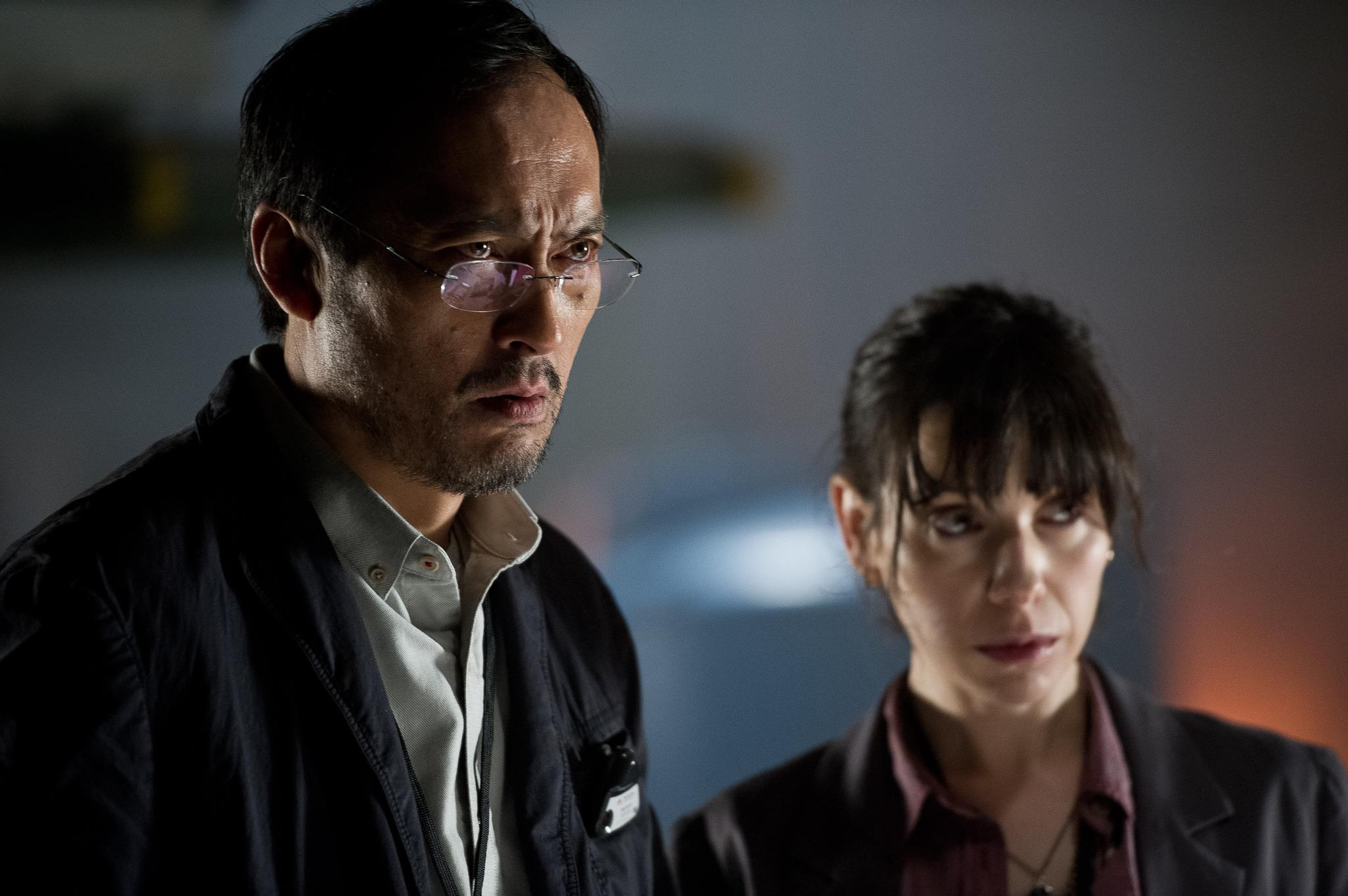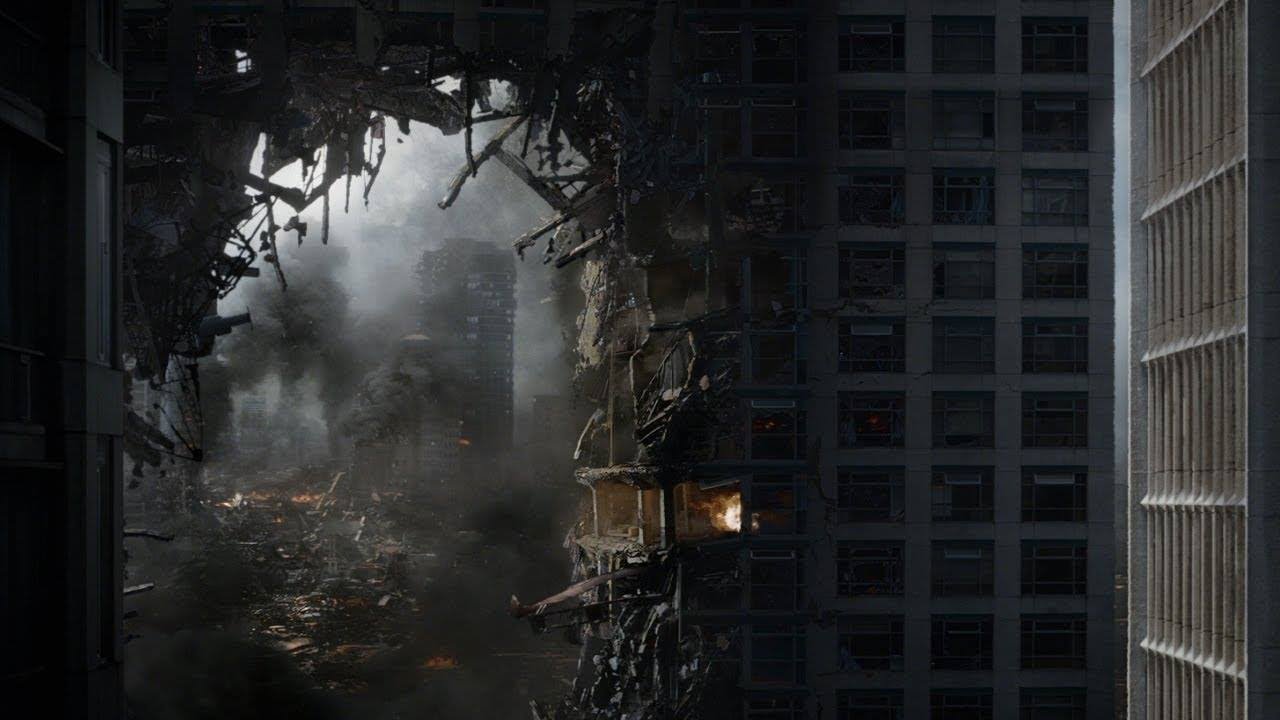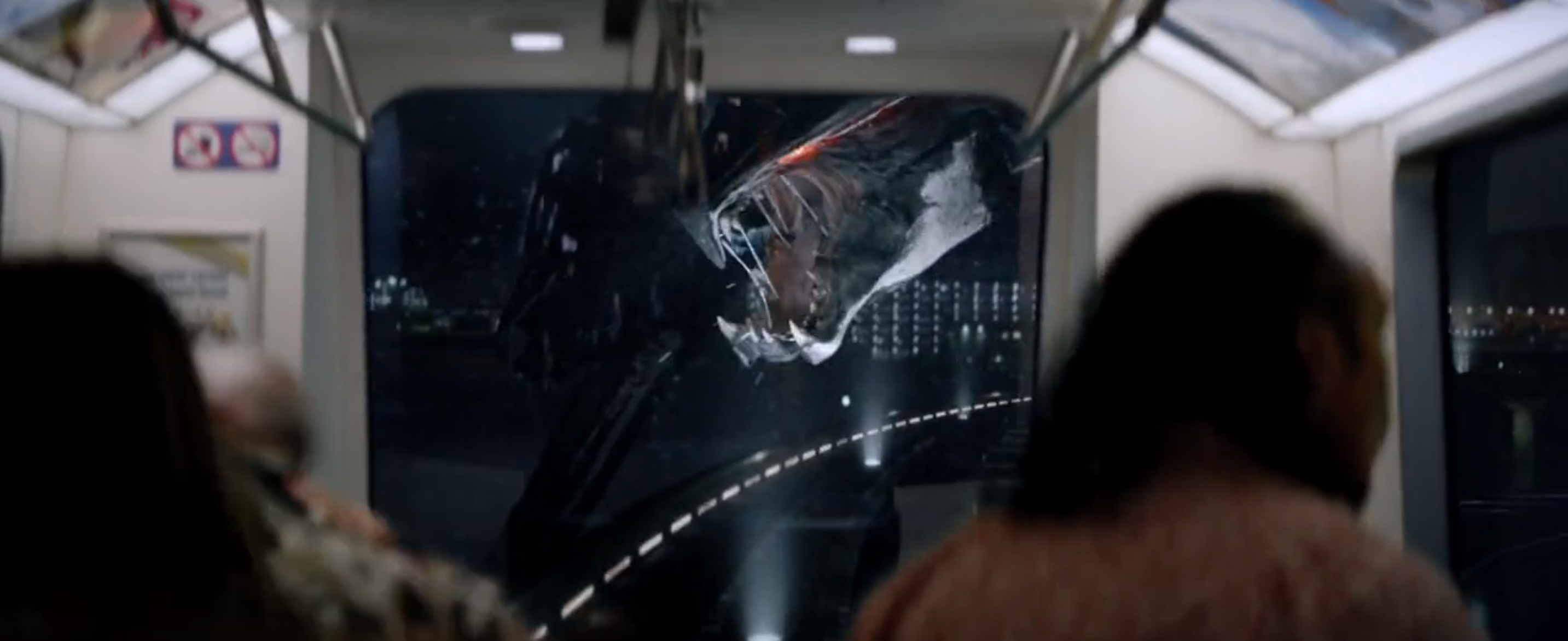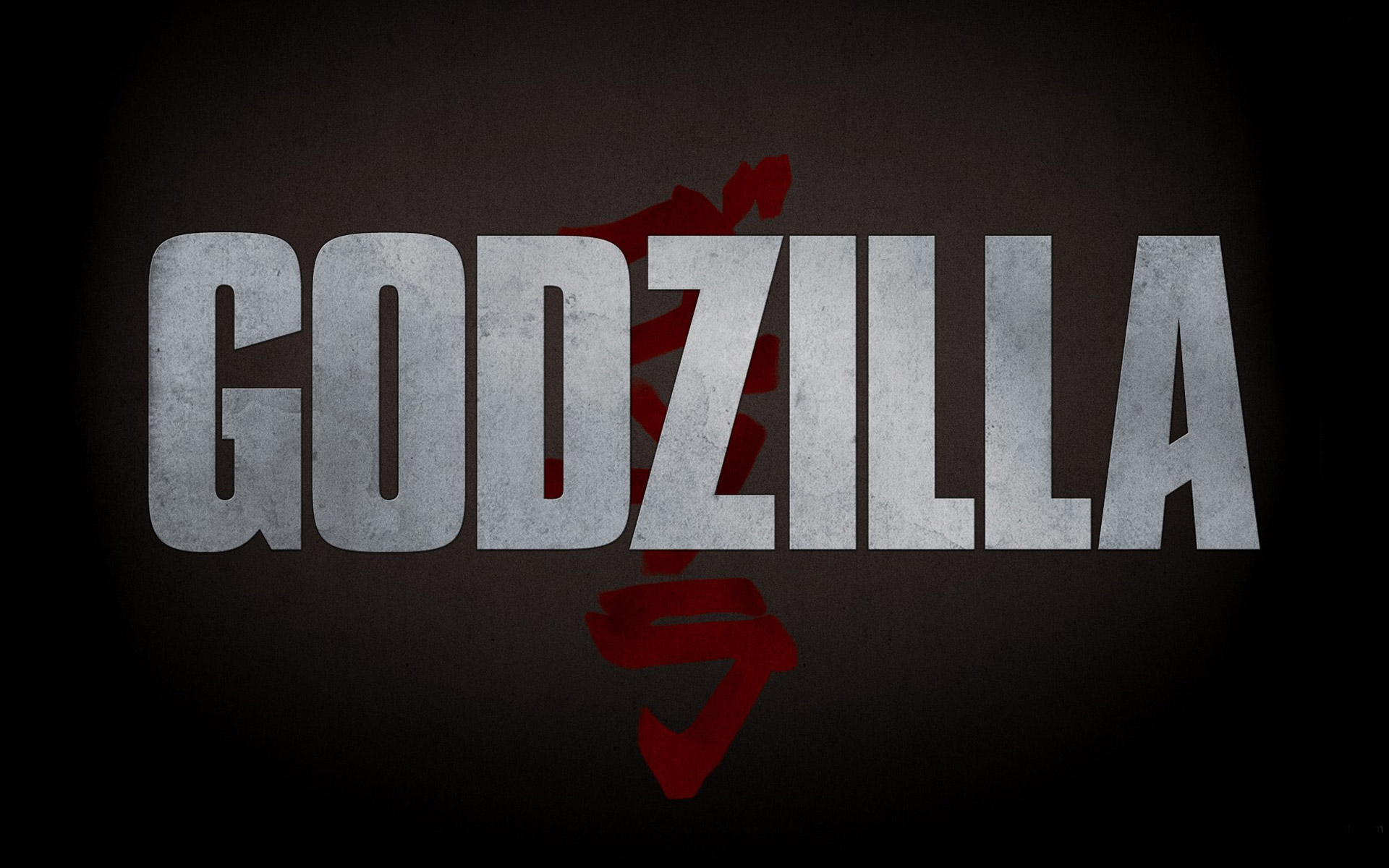Back in 1998, director, Roland Emmerich and Sony Pictures collaborated on an effort to bring iconic Japanese monster, Godzilla to North American movie theatres. The result was disastrous, but not for the unfortunate inhabitants of New York City that found themselves in the monster’s path. Badly written, insufferably illogical, and starring a sleepwalking Matthew Broderick, 1998’s Godzilla has become infamous amongst fans for its poor quality, with Japanese franchise handlers, Toho naturally disowning it, and renaming the American interpretation of the monster, “Zilla” as a result.
Almost two decades later however, Warner Bros. and Legendary Pictures saw fit to try again. The reboot of Godzilla for North American audiences marks the final collaborative effort between Warner Bros. and Legendary Pictures, with Legendary now inking a new deal to produce movies exclusively for Universal. It also comes on the heels of last year’s highly entertaining monster blockbuster, Pacific Rim, also a collaboration between these two studios, and one praised at length for its outstanding special effects, bold originality, and highly entertaining story.
These two studios have already given us one great monster movie, and with Toho’s blessing and direct involvement this time, all of the pieces seemed to be in play for a proper Godzilla movie for Western audiences. But is that what we got?
Yes, yes it is! The Godzilla reboot wipes clean the smear of its 1998 predecessor with a proper Western debut for the King of the Monsters. It’s a more human movie than many people will likely expect, with most of its monster-sized action saved for a jaw-dropping and visually stellar climax, but it’s also a movie that effectively weaves heart-wrenching drama with large-scale destruction, and even subtle touches of cheeky visual humour.
Some may be annoyed at Godzilla’s lack of screentime in his own movie, but the slow burn pace still gives you plenty to get sucked into as you wait for the inevitable monster-sized melee at the end. The result is a smart and engaging blockbuster that is highly reverent and enthusiastic toward the source material, and stands with the lighter and more colourful Pacific Rim as the other half of a promising foundation for the return of the Hollywood monster movie!
Godzilla’s ensemble cast involves a slew of personalities all affected by the world now being threatened by massive monsters. Aaron-Taylor Johnson is arguably the main protagonist, playing Ford Brody, a U.S. military lieutenant working in explosive disposal, but for the opening minutes, Bryan Cranston’s Joe Brody, Ford’s father, is the one actually establishing the movie to start.
While Cranston only shows up to establish proceedings before we even properly see Godzilla himself, being the admittedly somewhat cliched conspiracy nut that failed to warn the world of what was coming in time, Cranston’s performance is still one of Godzilla’s best. He absolutely dives into the part and perfectly sells the imminent terror and panic that will inevitably come just moments later. Cranston is a large part of the reason why Godzilla’s opening moments are among its strongest, particularly thanks to a wonderfully tragic opener alongside a fleeting Juliette Binoche as Joe’s ill-fated wife, Sandra.
Unfortunately however, we’re then saddled with Aaron-Taylor Johnson’s less interesting military man for much of the story. Ford is meant to be the eyes of the audience amidst the military’s repeated (and failed) attempts to destroy the monsters, but the character just isn’t given anything worthwhile to do beyond push the plot forward and gawk at the beasties.
Ford has a wife and child, granted, with Elizabeth Olsen in the role of his better half, Elle Brody, but Olsen is similarly shafted in the writing. Both Taylor-Johnson and Olsen are talented actors, and they at least have decent chemistry when they are together, but for most of the movie, they’re separated and just caught in a bunch of mindless chaos. While Cranston’s opening scenes feel emotionally engaging and tense, Taylor-Johnson’s and Olsen’s middle moments just seem bland and slow. It’s really unfortunate.
Thankfully, Ken Watanabe picks up the slack as another effective supporting cast member. Watanabe plays Japanese monster researcher, Dr. Ishiro Serizawa, a character ripped straight from the original 1954 Japanese Godzilla movie. Like Cranston, Watanabe is shouldering much of the movie by managing to sell the drama where the other actors stumble. He, along with Cranston, owns most of the script’s best lines, which were all unfortunately given away in the trailers on both counts. Even then however, Dr. Serizawa feels very true to the spirit of the franchise, being the one often protesting the useless military actions, with the alternate solution that audiences want to hear; Let the monsters fight!
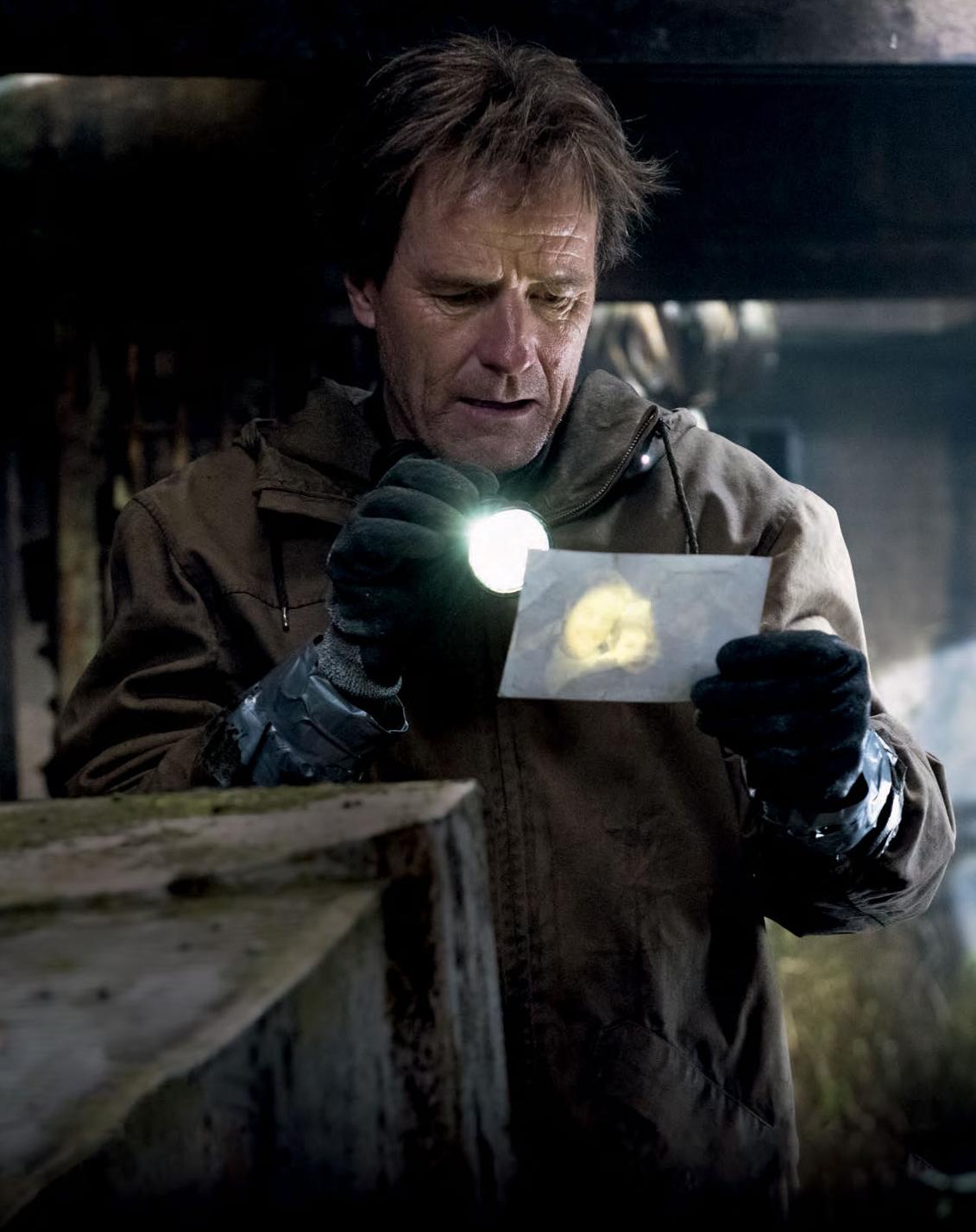 The portrayal of Godzilla is another thing that the 2014 movie actually gets right as well, so fans of the original Japanese media can rest easy. The 1998 movie portrayed Godzilla as an actively malicious fiend that seemed intent on destroying humanity for seemingly no reason. That’s not what Godzilla is. Godzilla is ultimately an animal, and a primal force of nature. He acts on instinct and simply can’t be controlled by man. The way that the reboot portrays Godzilla and the other monsters as prehistoric beasts that aren’t in touch with their human-developed surroundings is very effective and evocative. A nice touch in the reboot is that Godzilla and the other monsters don’t even notice the humans most of the time in fact, even when they’re being pelted by bullets and explosives.
The portrayal of Godzilla is another thing that the 2014 movie actually gets right as well, so fans of the original Japanese media can rest easy. The 1998 movie portrayed Godzilla as an actively malicious fiend that seemed intent on destroying humanity for seemingly no reason. That’s not what Godzilla is. Godzilla is ultimately an animal, and a primal force of nature. He acts on instinct and simply can’t be controlled by man. The way that the reboot portrays Godzilla and the other monsters as prehistoric beasts that aren’t in touch with their human-developed surroundings is very effective and evocative. A nice touch in the reboot is that Godzilla and the other monsters don’t even notice the humans most of the time in fact, even when they’re being pelted by bullets and explosives.
Yes, there are other monsters in the movie, another positive element that the 2014 reboot has over the 1998 original. While we disappointingly see more of these other monsters than we do Godzilla himself, the original American creations, the Muto’s (an acronym for ‘Massive Unidentified Terrestrial Organism’, with the bonus of sounding like a Japanese name that Toho would actually come up with), still lend themselves to plenty of carnage. They unfortunately feel quite boring in terms of capabilities compared to Godzilla’s long list of foes from the Japanese media to come before, but at least they’re well-realized visually.
Even if this reboot goes overboard with the teasing of its title character, frustratingly cutting away from Godzilla almost every time he’s about to fight or rampage through a city, at least every shot, every action and every roar that the creature actually performs is excellent and made to count. There could have been more of him, but at least Godzilla is portrayed properly this time.
Even with a somewhat weaker human element in some places, that’s really the high praise that the Godzilla reboot deserves; It actually feels like a true Godzilla movie.
Legendary Pictures refers to Godzilla as their new origin story for the character. That’s apt, considering that much of the style and storytelling feels reminiscent of the very first 1954 Japanese Godzilla movie, right down to not often seeing the monster properly before the climax. The difference however is that this re-telling of the origin for the King of the Monsters is expectedly made more modern and just a tad more grounded.
This also unfortunately means shedding the stirring political subtext from the original Japanese movie. Part of the reason why Godzilla has been such an iconic Japanese franchise for decades is because it managed to take a then-fresh tragedy that the country had suffered, the atomic bombs being dropped on Hiroshima and Nagasaki towards the end of WWII, and put it into perspective with a gripping and bold allegory for nuclear deterrence. Godzilla’s own evolution as a character from 1954 onward has somewhat reflected Japan’s own efforts to rebuild itself and re-establish its identity as a scarred nation at the time, which makes it small wonder that the Japanese hold Godzilla in such high esteem. Godzilla is to them what Superman is to North America, essentially.
One reference is made to the atomic bombs in the American reboot, but it basically just feels like a wink toward the Godzilla character’s thematic origins, even if it does lead to another great snippet of dialogue from Ken Watanabe.
Fortunately, the reverence to not just Godzilla’s origin, but his entire Japanese history, is very palpable throughout this reboot. There’s all sorts of clever sight gags and nods to the history of the Japanese franchise, which Godzilla enthusiasts will really get a kick out of. It helps to make up for the fact that recognizable monsters like Mothra, Rodan and Ghidorah are entirely absent and not even mentioned, though that’s what sequels are for.
On that note, there really isn’t much to Godzilla’s plot when taken by itself. The movie largely exists as simply a way to re-establish an iconic Japanese character for Western audiences, telling of people simply discovering these giant monsters for the first time, and their response to it. It feels like a collection of destruction and despair, with a vague air of mystery and even a twisted sense of hope when we see Godzilla hunt the more dangerous Muto monsters as its prey simply on instinct. Humans frequently feel sidelined to what essentially amounts to a slow-moving buildup to a big monster battle, and perhaps this is why Godzilla’s human element ultimately feels a bit weak. We’re perhaps a little too inconsequential in the grand scheme of the movie.
This is clearly a movie that wants to lay the groundwork for sequels, and it should. Maybe it could have done with being a bit more self-contained and feeling a bit less like the obligatory establishment efforts of Chapter One, but at least audiences can take comfort in the fact that plenty of great things are sure to come from such spectacle.
Despite his lack of experience as a director, Gareth Edwards knows monsters. That was probably already displayed with his only other feature directing credit, aptly named ‘Monsters‘. His reverence towards Godzilla may sometimes lead to an overly-passive monster movie, but fortunately, the scale and humbling element to the creature and his power is well-realized throughout proceedings.
Godzilla is a movie with a particular set of strengths then, and as such, it may not totally be what audiences are expecting. It can be very frustrating to have to wait for the end to actually see the monster fight that you paid for, but at least Edwards manages to bring together a good mix of chaos, spectacle and nods to the franchise while you’re waiting for Godzilla to actually get his hands dirty.
Like the very first 1954 movie, this reboot is played stark seriously too, almost to a fault. It stands in complete contrast to the more blatantly entertaining and light-hearted Pacific Rim, which is ironic when you consider that movie actually having malicious monsters that had already destroyed most of humanity, while the personalities of Godzilla are largely just caught between massive prehistoric predator and prey.
Ultimately, comparing Pacific Rim’s directing with Godzilla’s directing feels like apples and oranges. Pacific Rim was ultimately a very good, visually spectacular popcorn flick, while Godzilla aims to be something more serious and dramatic. It does enough to achieve that result, even if the screaming crowds and widespread destruction sell the terror a lot better than most of the lead actors do.
Still, one would be remiss to ignore Godzilla’s incredible directing polish. Maybe it’s a little too methodical at times, but every shot still counts, every angle is still calculated to perfection, and whenever Edwards wants a shot to impact the audience, it really impacts the audience! Even when the story gets a tad slow, usually when the monsters aren’t around, at least an incredible sense of awe and scale is still consistently captured throughout the movie.
As much as Godzilla looks to its 1954 Japanese inspiration for the style of its storytelling, putting aside the fact that it actually includes other monsters for Godzilla to fight in this case, the movie especially looks to Japan for its sound work. Most of the soundtrack isn’t easy to make out amidst all of the falling buildings and earth-shaking monster steps, but the Japanese-style brass and violin music fits the tone well, while continuing to provide a good nod to Godzilla’s Japanese origins.
Still, most of the soundtrack is reserved for destruction. The very effectively-realized, theatre-shaking sound design is perhaps an even bigger argument to spring for a ticket in IMAX 3D or UltraAVX 3D than the visuals when seeing the movie. In those specialty theatres, you’ll get even more out of the experience, as the very theatre rumbles with every action the monsters take, every building they knock down, and every blow they exchange in the movie’s final minutes.
Perhaps it goes without saying, but even in a regular digital screening, it’s going to get loud! If that’s anything less than a dealbreaker for you, you’re going to love it too. Believe me, Godzilla’s roar especially has never sounded more impressive than it does in today’s modern movie theatres!
Godzilla is ultimately very much a visual movie. It may not be as flashy as The Amazing Spider-Man 2, but it’s still a very visually stimulating blockbuster that will constantly leave you in awe at just how grand and imposing it all is.
As I mentioned, when Gareth Edwards wants a shot to impact the audience, it doesn’t pull any punches. The many visual standout moments, which I couldn’t possibly spoil, are all absolutely phenomenal, even in just a regular 2D digital screening. The power and might of the monsters is clearly a highlight, but even in the mere wake of their aftermath, Godzilla is a movie that constantly feels massive and visually striking in every respect.
Of course, it’s the final battle between Godzilla and the Muto’s that really presents some standout special effects work. The city-leveling mayhem is already very well-done, but the climax compensates for the wait by being arguably one of the best big screen monster battles that this franchise has delivered yet. It’s very cool, very violent, and very satisfying indeed!
Godzilla himself does appear to be a tad chunky in a few spots, with the Japanese going as far as to refer to him as, “Fatzilla.” He still looks amazing though, especially in the wider shots that capture his full design. The Muto’s look pretty sharp as well, though they still seem far less creative than what Japan came up with throughout Godzilla’s history as a franchise. The Muto’s may still look nice, large and detailed, but they just amount to the same strain of Hollywood monster that Cloverfield and Super 8 did already. Why do Americans have so much more trouble designing noteworthy monsters than the Japanese? Oh well.
Godzilla is available to view in several formats, and for my screening, I opted for the UltraAVX 3D cut. The 3D in this version is not quite as potent as the IMAX 3D cut, where you’ll get an even better sense of the enormous scale behind every shot on the larger IMAX screens. Even then however, as well as with standard digital 3D screenings, the 3D is reasonably solid in UltraAVX. It’s mainly done to complement the frequent wide shots and make the movie seem especially large and engrossing, especially when the full glory of each monster is actually captured on screen, and it’s not bad. If you prefer 3D movies, this is worth watching in 3D, if for the increased atmosphere alone.
Even just in 2D however, Godzilla remains visually striking. If you’d rather shirk the special formats and just watch the movie flat, you’ll still get a good sense of the excitement and drama that way, even if the 3D cuts are a little more immersive.
Bottom line however is that Godzilla looks absolutely phenomenal from a visual standpoint. Maybe Japanese purists will still prefer cheap rubber suits and scale city models, but in terms of authenticity, this is far and away the most visually arresting Godzilla movie made to date!
Godzilla isn’t a perfect movie, and probably won’t compare to the original works for purist fans of the original Japanese movies. As a true American Godzilla movie however, for non-fans of the Japanese media and those not familiar with the character, which is probably the majority of Westerners to be honest, Godzilla is a fantastic introduction and second coming for the franchise, as it’s meant to be experienced. It’s many leagues better than the rather unfortunate 1998 movie.
The reboot’s main strengths come from its directing and technical elements, all of which are best experienced in the theatre, where you can put on 3D glasses and really get sucked into all of the monster-sized peril. The human element is still far less interesting for the most part, and why the Americans opted to design another generic Hollywood monster for an antagonist when they could have just taken one of the superior Japanese foes like Mothra or Ghidorah is a bit of a mystery. This is why it’s a shame that we don’t get more time with Godzilla himself especially.
All things considered however, it doesn’t change the key feather in this movie’s cap; It’s a true Godzilla movie. It’s the great Godzilla origin movie that Western audiences deserve. It feels like the franchise can easily improve over the course of some sequels too, and this first movie definitely feels like something that can only snowball into something even more grand and impressive, going forward.
It’s important to enter Godzilla with the proper expectations, as it’s a harrowing, slow burn monster-sized thriller that is 90% buildup for one great climactic battle between larger-than-life creatures. If you’re ready to be left in awe and eagerly anticipating promising developments to come however, then Godzilla is a great way to introduce yourself to its title character, properly this time.
All hail the King of the Monsters!

